"Everywhere in Chains": Wales and Slavery
Most societies have exploited slave labour at some stage in their history. This is also true of Wales.
The transatlantic slave trade flourished from the early sixteenth century (about 500 years ago) until two hundred years ago when, in 1807, the British parliament passed an Act to abolish trading slaves within the British Empire.
Campaigns to stop slavery had been started by black and white people more than thirty years before the Act was finally passed. Even after 1807 the slaves already living in British colonies were not actually set free until 1838.
Slavery remained legal in some other countries for more than another fifty years. Today illegal slavery still continues in many parts of the world — even in Wales.
Slavery
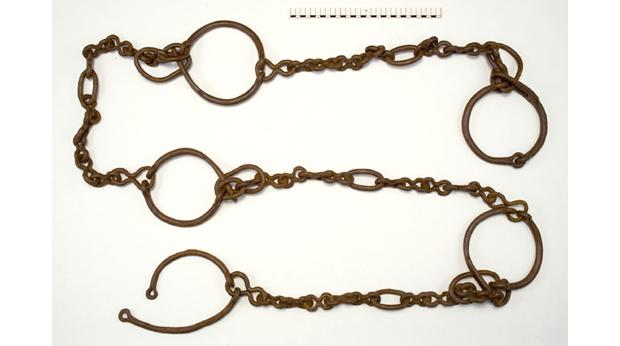
A slave chain discovered in Llyn Cerrig Bach, Anglesey, was made to fit five people. It can be dated to the Iron Age (about 2,300 years ago). When the Romans invaded (about 2,000 years ago), they brought their own slaves with them – slaves from nations across the Roman Empire in Europe, North Africa and the Middle East.
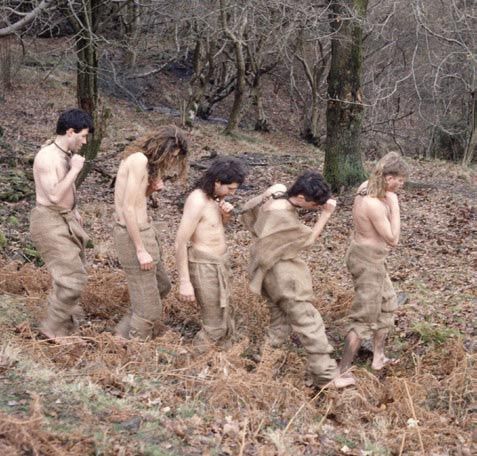
A reconstruction of how the Llyn Cerrig Bach chain may have been used.

This communion chalice of Guinea gold was given to Welshpool church in 1662 by Thomas Davies. He owned a slave plantation in Barbados and was the Agent General for the forerunner of the Royal African Company in West Africa.
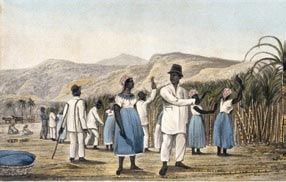
Slaves cutting sugar cane on Henry De La Beche's Jamaican plantation, 1824.
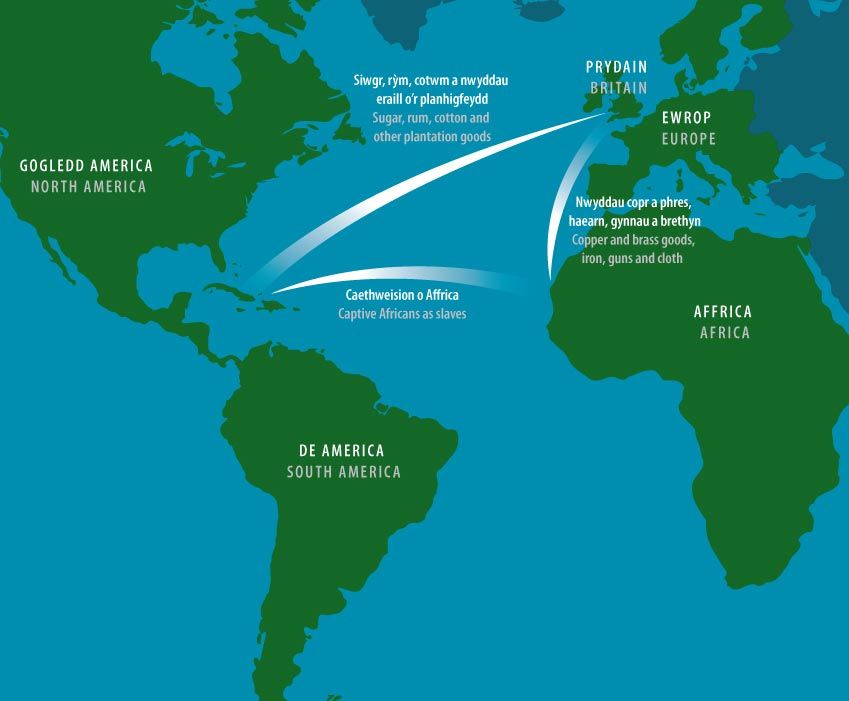
The 'Triangular Trade' routes. This map shows what was carried on each leg of the journey.

Welsh copper would have been used to make the brass for these manillas at Birmingham or Bristol. Based on an indigenous West African design, these 'bracelets' were the main currency for buying slaves.
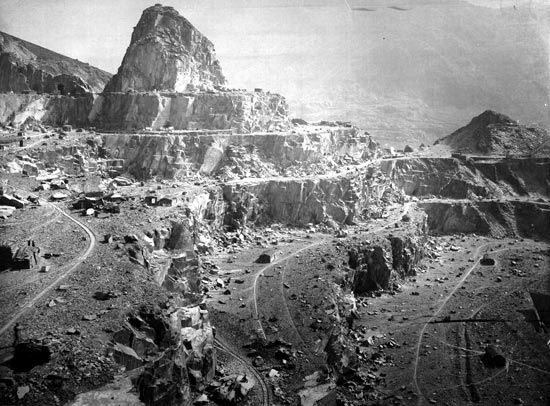
This view of Penrhyn slate quarry shows the vast scale of the excavations. They were begun in 1785 by Richard Pennant, MP for Liverpool and owner of large slave plantations in Jamaica. Richard Pennant (c.1737-1808) invested his profits from sugar and rum to finance and develop the Penrhyn slate quarry in Gwynedd.
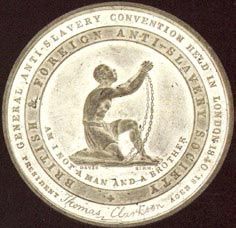
This image of a kneeling slave was commissioned by the Abolition Society from the potter Josiah Wedgwood in 1788. It became an icon for anti-slavery movements throughout the world during the next hundred years.

Many local anti-slavery societies had been established across Wales during the campaign to abolish slavery between 1807 and 1838. In the decades after 1838, they turned their attention to the issue of slavery in the United States. This poster was produced for a lecture tour by a freed slave campaigning for abolition in the United States of America. It uses a crude copy of Josiah Wedgwood's "kneeling slave" image of 1788.
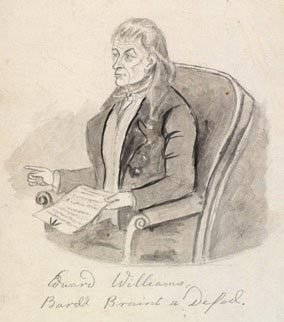
The Abolition of Slavery movement in Britain grew out of the 'Committee for Abolition of the African Slave Trade' which was formed in 1787. The Welsh attitude to the campaign varied. Many people depended on the slave trade for their livelihoods, either directly or indirectly. The bard Iolo Morganwg supported the boycott of slave-produced goods. From his shop in Cowbridge he sold only "East Indian Sweets, uncontaminated with human gore".
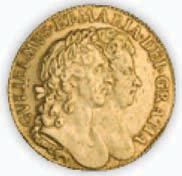
A guinea showing King William III and Queen Mary II, struck in 1694. Some words have their origins in the slave trade. For example, a guinea was a gold coin minted between 1663 and 1816. The coins were originally made from gold brought from Guinea in West Africa.
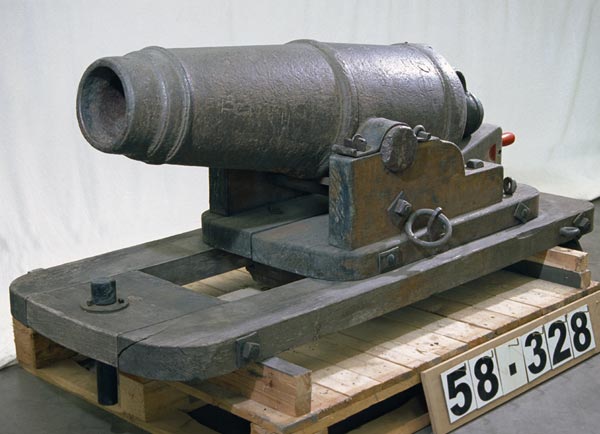
Napoleonic Carronade, 1802. Probably cast at the Cyfarthfa Iron Works at Merthyr. Popular on ships involved in the slave trade.
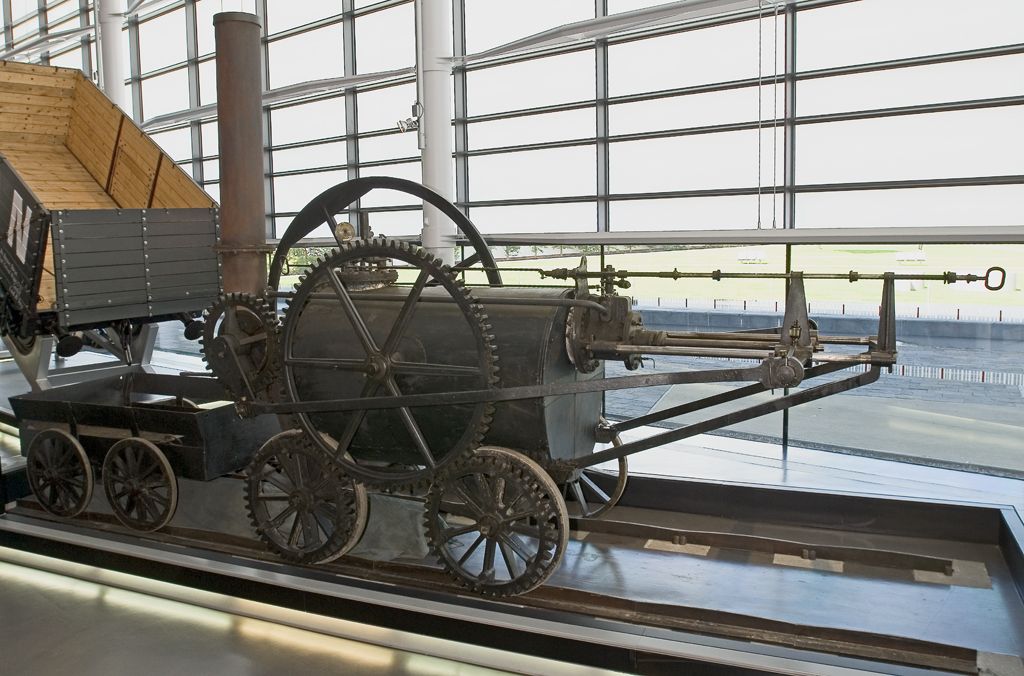
Richard Trevithick's Penydarren Locomotive of 1804 - this is a replica of the first working locomotive used to haul goods trains. Some of our greatest developments were financed by the trade in human lives.
Comments - (7)
I've been in touch with many of our newfound cousins, to exchange information, and I'm delighted to say that firm friendships have been formed. Though, the search for our common ancestor continues.
Did the actual John Brown (of the battle hymn "John Brown's body lies a rotting in the grave but we go marching on..") lecture there ?
A figure legend of my book in long preparation "Love and War in Cuba" which discussed the Roman invasion of Anglesey reads:
Figure XXX The sacred lake of Llyn Cerrig Bach, “… Perhaps one of the most important iron age sites in the country. A Sacred Lake, into which many votive goods were offered from the late Iron Age (2nd century BC), until just before the Conquest of Anglesey by the Romans. Eleven swords, eight spearheads, wheels of up to 22 different chariots, parts of a shield, and slave chains were found during peat extraction in the Second World War.” Image is from a google site photograph by Tim Prevett. The first discovery, that of the slave chains, was made first by the hard laboring Irish navvies working for Lord McAlpine in the years Dad was stationed there. Strangely similar slave chains were captured by putative maternal ancestor Sancho el Fuerte, from the slave-warriors of the Arab Chief Miramamolins, defeated in the battle of Las Navas de Tolosa in 1212.
The old shield of (now Spanish) Navarra can be found at Navarra (accessed 1-20-2016) in: Heráldica Española - Spanish Civic Heraldry http://www.ngw.nl/int/spa/prov/navarra.htm. Some of these chains are found in the little chapel of Sancho El Fuerte in Roncevalle, Spain. Somewhere in my reading, if memory serves, there is a note on the friendship between Richard the Lionheart and Sancho El Fuerte,